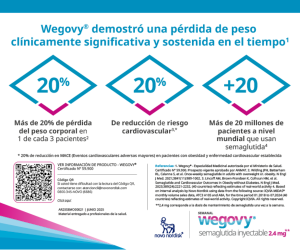P41 Diagnosis in gestational diabetes during the pandemic
DOI:
https://doi.org/10.47196/diab.v54i3Sup.714Keywords:
diagnosis, gestational diabetes, pandemicAbstract
Objectives: Analyzing the effect of the pandemic over perinatal controls and results of diabetic pregnant women.
Materials and Methods: Exploratory, transversal, descriptive, and comparative study. Sample: 465 registers of diabetic pregnant women treated by the EIPED team (Multidisciplinary Team for the study of the diabetic pregnant woman) from the Our Lady of Mercy Maternity and Gynecology Institute during the first semester of the year 2019 (n=237) and 2020 (n=228). Variables: Aggregator variable: Year (1st semester of 2019; 1st semester of 2020); Maternal age, maternal BMI, Risk Factors (RF); Gestation Age 1st Consultation (Trimester: T1, T2, T3, Postpartum); Mode of delivery; Derivation Delay (% weeks): (D0: no delay; D1:<4w; D2:4-13w; D3:14-26w; D4:Postpartum); Newborn Condition: FD; Alive; Dead; Weight/GA: IUGR (P97); APGAR 1 minute. Statistical Study: Descriptive, Associations Analysis (Chi-Squared Test) to the 5%.
Results: Maternal Age: 30±6; Min=17; Max=44. BMI: 2% (Low); 29% (Normal Weight); 20% (Overweight); 49% (Obesity), without year association (p=0.9955). Risk Factors (RF): 31% with two RF and 42% with three or more RF. GA 1st consultation (p=0.0061): 2019: T1 (2%), T2 (23%), T3 (70%), Postpartum (6%); 2020: T1 (1%), T2 (21%), T3 (62%), Postpartum (15%). A total of 319 (71%) patients completed the pregnancy, a 70%
with cesarean delivery: there was no difference between years (p=0.5243). Derivation Delay (D %) 2019/2020: D0 (3/5); D1 (40/26); D2 (48/50); D3 (4/3); D4 (6/17) with p=0.000626; New Born (NB): 99.4% alive; in 2020: 2 FD and 2 deceased before the 24 hours. Weight/GA: LW (9%); Adequate Weight (79%); High Weight (12%) without year
association p=0.2633. APGAR 1 minute: 88% (≥8); 11% (6 to 7) without year association p=0.2756.
Discussion and Conclusion: Comparing the first semester of 2019 and 2020, no association in the perinatal result was observed. However, IUGR (P<3) were a 38% higher than in 2019, with 4 adverse results: 2 FD and 2 deceased NW before the 24 hours. The first late consultation was a 61% higher than in 2019, and it was observed, in 2020, a delay in a 70% higher than 4 weeks, especially on postpartum (from a 6%, it increased to a 17%). The diagnosis of the diabetic pregnant women, in times of pandemic, has been hampered by various factors regarding primary care, laboratory diagnosis and the timely referral to the team, a situation that generates consequences in the short and long term for the mother/child binomial. It must be highlighted that once these factors are detected, strategies and regulations must be established in order to reduce them to the maximum and detect them on time, ensuring a better result.
Downloads
Published
Issue
Section
License
Copyright (c) 2020 Sociedad Argentina de Diabetes Asociación Civil

This work is licensed under a Creative Commons Attribution-NonCommercial-NoDerivatives 4.0 International License.
Dirección Nacional de Derecho de Autor, Exp. N° 5.333.129. Instituto Nacional de la Propiedad Industrial, Marca «Revista de la Sociedad Argentina de Diabetes - Asociación Civil» N° de concesión 2.605.405 y N° de disposición 1.404/13.
La Revista de la SAD está licenciada bajo Licencia Creative Commons Atribución – No Comercial – Sin Obra Derivada 4.0 Internacional.
Por otra parte, la Revista SAD permite que los autores mantengan los derechos de autor sin restricciones.




























